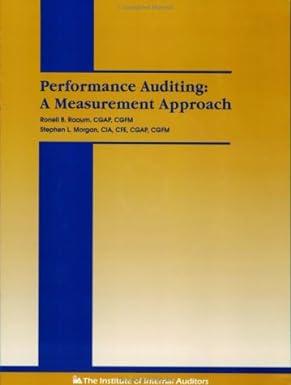P2-3 Economic order quantity; tabular computation Lopez Chemical Inc. requires 20,000 gallons of material annually; the cost of placing an order is $20; the annual carrying cost per gallon is $5. Required: Determine the EOQ from potential order sizes of 300, 400, 500, 600, 700, and 800 gallons by constructing a table similar to the one appearing on pages 73-74. If these funds were not used to purchase inventory, they could have been the calculations will vary depending on the cost of borrowing, or the rate Quantitative models or formulas have been developed for calculating the Chapter 2- Accounting for Materials 73 ne at as economic order quantity. One formula that can be used is the following: where 2CN EOQ = economic order quantity EOQ = - VK = cost of placing an order N = number of units required annually K = annual carrying cost per unit of inventory To illustrate this formula, assume that the following data have been determined by analyzing the factors relevant to materials inventory for Paducah Paint Co.: Number of gallons of material required annually Cost of placing an order ....... Annual carrying cost per gallon of inventory. Using the EOQ formula, 500 gallons should be ordered at one time: 2 x cost of order x number of units required annually EOQ = carrying cost per unit 2 x S10 x 10,000 S.80 er - 10,000 $10.00 $ 80 11 r : T $200,000 $.80 250,000 500 gal. The EOQ can also be determined by constructing a table using a range of order sizes. A tabular presentation of the data from the previous example, assuming no safety stock, follows: (1) (2) (3) (6) (4) (5) Order Number of Total Order Average Total Carrying Total Order & Size Orders Cost Inventory Cost Carrying Cost $1,040 50 $ 40 $1,000 100 100 580 80 100 50 200 500 450 120 150 300 330 33 410 160 200 400 25 250 400 200 250 500 200 20 410 300 600 170 17 240 Principles of Cost Accounting (6) Total Order & Carrying Cost 420 450 470 500 350 ao 700 R00 909 13 11 10 500 (5) (1) (3) (2) Order Total Carrying Total Order Number of Average Sire Orders Cest Cost Inventory 140 280 130 320 110 360 1.000 100 400 In this table, the amounts in each column are determined as follows: (1) Number of gallons per order (2) Annual requirement of 10,000 gallons/order size in column (1) (3) Number of orders in column (2) x $10 cost per order (4) Order size in column (1)/2 = average inventory on hand during the year (5) Average inventory in column (4) x S.80 per gal. carrying cost for one year (6) Total order cost in column (3) + total carrying cost in column (5) The graph in Figure 2-3 shows the total annual order cost decreasing as the order size increases because the order cost is a function of the number of Figure 23 Costs of Ordering and Carrying Inventory $1,100 1.000 900 800 700 600 TOTAL ANNUAL COSTS 500 400 TOTAL COST-CARRYING AND ORDERING 300 TOTAL COST OF $400 AT ORDER OF 500 GALLONS TOTAL CARRYING COST 200 TOTAL ORDERING COST 100 0 0 100 200 300 400 500 600 700 800 900 1.000 ORDER SIZE (GALLONS)









